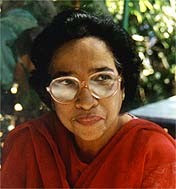When Nadezha Popova a heroine of World War II died at the
age of 91 in Moscow on July 8th 2013, no flags flew at half mast in
recognition of her brave wartime services. In fact, the Night Bomber Units of
the Russian Air Force had quietly slipped into oblivion after the war.
Nadezha was born in Shabanovka, Ukraine on December 17th,
1921. She was not particularly interested in Academics but loved outdoor
activities. At the age of 15, she joined a Flying Club to learn how to fly.
Within a year she was able to take her first solo flight and also make a
parachute jump. Later, she trained at an Aviation School in Kherson, Ukraine.
During the war, German soldiers invaded her home and
turned it into a Gestapo Police station. Her brother was killed and the family
left homeless. Overhead, German planes
strafed innocent civilians indiscriminately and gloated over the havoc they
created. It stirred up anger in this young girl and a desire for revenge.
Women were not inducted into the Russian Armed Forces
until 1941 because ‘no one wanted to give women the freedom to die.’ But realizing
how women could be put to good use in the war effort, Stalin established three
all-women Air Force units. One of these was the 588th Night Bomber
Regiment.
Nadezha was 19 when she enlisted. Most of the other girls
who joined the regiment were also in their teens. They were ill equipped for
this mission. Even the uniforms they wore were hand-me-downs from the men.
The planes these young teenagers were expected to fly
were obsolete two-seaters – the 1920 vintage Polikarpov PO2 planes. These had
ply wood frames with canvas stretched across, and had the most rudimentary
instruments. No guns, radios or
parachutes. The girls had to chart their course with compasses, maps and stop
watches. Each plane had two bombs strapped under their wings. So the girls had
to make several sorties during the night, as part of their duty. The planes had
limited speed and had to be flown at low levels to escape detection by radar.
They cut their engines before gliding over a target and releasing the bombs.
Then they re-started the engines and flew away.
The peculiar whooshing sound made by the engines sounded
like witches riding in the sky on their broomsticks. So the Germans christened
them ‘Night Witches.’ These dare devils caused a lot of damage to German
military encampments, supply depots and isolated air bases. The Night Witches
did about 30,000 missions in four years, and dropped 23,000 tons of bombs. Any
German who shot down a Night Witch was decorated with the Iron Cross.
The planes usually flew in formations of three. Two
advance decoys were followed by the third plane which dropped the bombs. Each
plane took turns in the bombing routine.
These young women were fearless. Fired by a spirit of
patriotism and hatred for the Germans, they were hell bent on doing as much
damage to the enemy as their puny planes would allow. Many times they flew through
walls of enemy fire. Some were shot down and lost their lives. Germans spread
the rumour that these witches were given injections to improve their night
vision.
Nadezha Popova was promoted to Lieutenant Colonel. She was
active in 852 missions. Though she came under fire many times she was not badly
hurt.
On one occasion when
she was shot and forced to land, she found herself in a group of retreating
troops and civilians. It was here that she met another pilot Semyon Kharlamov,
who was also shot down. They saw each other several times during the war. In
1945, at the end of the war, they were both in Berlin and signed their names on
the wall of the Reichstag.
Nadezha and Semyon were married soon after and lived a
happy life until Semyon’s death in 1990. Post-war, Nadezha went back to being a
flying instructor. She was decorated with several honours – The Soviet Medal of
Honour, Order of Friendship, Order of Lenin and Order of the Red Banner.
Nadezha joins the ranks of the many brave women who
risked their lives for their country in World War II.












